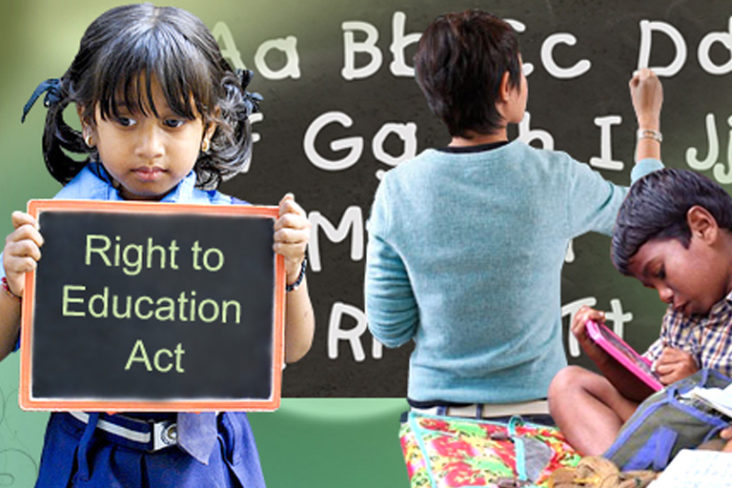What is Right to Education (RTE) Act?
Under Article 21-A, the Right to Education Act (RTE) provides free and compulsory education for children as a basic right. In august 2009, it was enacted by the Parliament. Since its inception, India became one among 135 countries where education is a fundamental right of every child.
Why Right to Education Act?
The Right to Education acts as a building block to make sure that every child has right to get a quality elementary education. Also, government of India wants every Indian child to get a basic education, regardless of gender, caste, creed, and family income.
Features of Right to Education Act
- The Right to Education Act 2009 targets to provide primary education to all children aged 6 to 14 years.
- It imposes Education as a Fundamental Right (Article 21).
- The act commands 25% reservation for disadvantaged sections of the society where this groups include SCs and STs, Socially Backward Class and Differently abled.
- It also makes provisions for a non-admitted child to be admitted to an appropriate class according to his/her age.
- It also refers sharing of financial and other responsibilities between the Central and State Governments.
- It also states the norms and standards related to Pupil Teacher Ratios (PTRs), Buildings and infrastructure, School-working days and Teacher-working hours.
- It had a “No Detention Policy” which has now removed under The Right of Children to Free and Compulsory Education (Amendment) Act, 2019.
- It also states rules for prohibition of deployment of teachers for non-educational work, other than decennial census, elections to local authority, state legislatures and parliament, and disaster relief.
- It calls for the appointment of properly trained teachers with the necessary entry and academic qualifications.
- It bans physical punishment and mental harassment, Screening procedures at the time of admission, Capitation fee, Private tuition by teachers and Running of unrecognized schools.
- It focuses on making the child fear free, trauma and anxiety through a focused system of child friendly and child centered learning.
Achievements of Right to education Act
- The Right to education (RTE) Act has successfully succeeded in increasing enrollment in the upper primary level i.e. Class 6-8.
- In rural areas, strict infrastructure rules resulted in improved school infrastructure.
- Under 25% reservation, more than 3.3 million students secured admission.
- It made nationwide education accessible.
- “No detention policy” removal has brought accountability in the elementary education system.
- The Government has launched an integrated scheme, for school education named as Samagra Shiksha Abhiyan,which incorporates the three schemes Sarva Shiksha Abhiyan (SSA), Rashtriya Madhyamik Shiksha Abhiyan (RMSA)and Centrally Sponsored Scheme on Teacher Education (CSSTE).
Limitations of RTE act
- Right to Education is available only for the age group 6 to 14 years, which can be made more inclusive and encompassing by expanding it to 0 – 18 years.
- Under the act, children below 6 years are not included.
- ASER reports showed that there is no focus on quality of learning, and RTE Act appears to be mostly input oriented.
- Five States Goa, Manipur, Mizoram, Sikkim and Telangana have not even issued notification regarding 25% seats for underprivileged children of society under the RTE.
- Shortage of teachers affect pupil-teacher ratio mandated by RTE which in turn affects the quality of teaching.
Measures needed to be taken
- Minority Religious Schools need to be brought under the Right to Education act.
- There should be more focus on teacher training programs.
- There should be more focus on quality of education.
- There should be more awareness about the teaching profession to make it attractive.
- Society as a whole need to be understanding of education for children without biasness.
There is no doubt that Right to Education Act is one of the most needed reforms in the Indian education system and it has a positive effect on students’ lives. But there are various cities, villages and towns that are still lacking in implementation and management processes. Though we can see an surge in the number of admissions in schools under the RTE act, but learning outcomes are on a decline.
Disclaimer: All information collected from Google search. If you found any discrepancy please contact us to correct that information.


